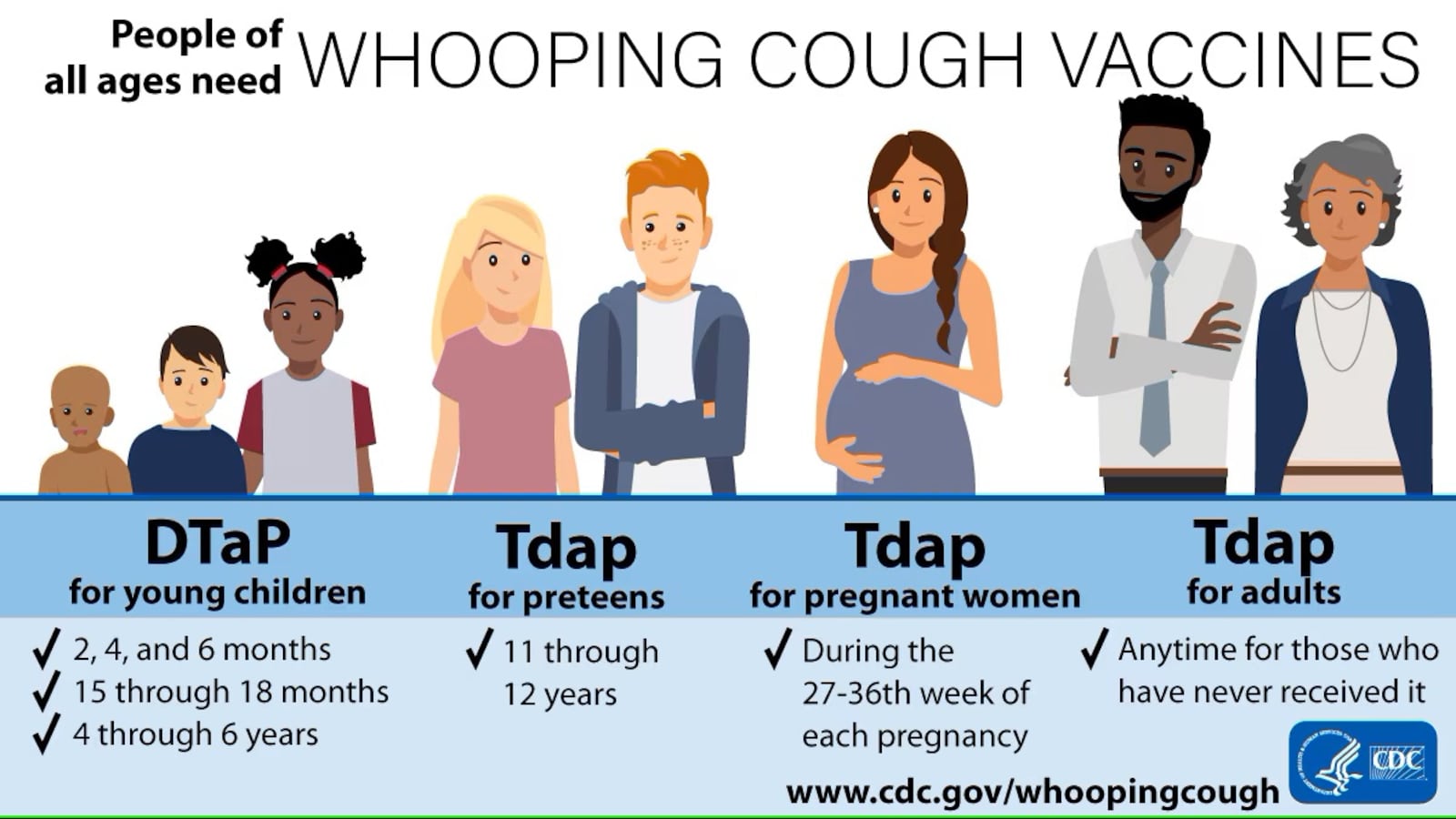The last time Ohio saw more than 1,600 cases was in 2010 with 1,851 reported cases of whooping cough, according to ODH data.
“After seeing lower numbers of reported cases in the past few years during and after the COVID-19 pandemic, across the nation pertussis or whooping cough is now returning to its pre-pandemic trends,” said Dr. Bruce Vanderhoff, director of the Ohio Department of Health.
| County | 2020 | 2021 | 2022 | 2023 | 2024 |
|---|---|---|---|---|---|
| Butler | 9 | 3 | 3 | 8 | 51 |
| Champaign | 0 | 0 | 0 | 1 | 6 |
| Clark | 0 | 2 | 1 | 8 | 29 |
| Darke | 2 | 2 | 0 | 19 | 8 |
| Greene | 6 | 1 | 1 | 26 | 98 |
| Miami | 3 | 1 | 0 | 25 | 34 |
| Montgomery | 42 | 10 | 13 | 190 | 429 |
| Preble | 2 | 0 | 0 | 6 | 14 |
| Warren | 14 | 3 | 1 | 49 | 105 |
| All of Ohio | 344 | 115 | 159 | 877 | 1,673 |
Montgomery County had the highest amount of cases in Ohio last year. Franklin County followed Montgomery County as the second highest with 204 cases last year, still fewer than half of Montgomery County’s number of cases.
Other counties in the Dayton region saw confirmed cases of whooping cough in 2024, including 105 in Warren County, 98 in Greene County, 51 in Butler County, 34 in Miami County and 29 in Clark County, according to ODH data. Other counties in the region had a handful of cases each.
The increase in whooping cough highlighted the importance of the DTaP vaccine, which is a combination vaccine that protects against whooping cough, diphtheria and tetanus, according to the Centers for Disease Control. Babies and children younger than seven years old receive DTaP, while older children and adults receive Tdap.
| County | 2015 | 2016 | 2017 | 2018 | 2019 |
|---|---|---|---|---|---|
| Butler | 16 | 14 | 28 | 13 | 45 |
| Champaign | 1 | 0 | 0 | 0 | 1 |
| Clark | 8 | 8 | 8 | 5 | 11 |
| Darke | 2 | 1 | 3 | 1 | 9 |
| Greene | 5 | 9 | 8 | 14 | 32 |
| Miami | 4 | 9 | 9 | 7 | 9 |
| Montgomery | 56 | 51 | 102 | 86 | 100 |
| Preble | 0 | 1 | 1 | 6 | 5 |
| Warren | 10 | 17 | 14 | 11 | 51 |
| All of Ohio | 797 | 971 | 830 | 669 | 956 |
Families should talk to their child’s health care or vaccine provider if they have questions about whooping cough vaccines, the CDC says.
“Early on in the first week of infection, pertussis may feel like many other respiratory illnesses with a runny nose, low-grade fever or an occassional cough,” Vanderhoff said.
After a week or so, people may develop coughing fits that can end up being very severe, he said.
“Some people have described it as the worst cough of their life,” Vanderhoff said. “For babies, this illness can be more than an inconvenience, it can be life-threatening as they can struggle to breathe, even if they don’t develop coughing fits.”
Credit: Angie Wang
Credit: Angie Wang
In regard to measles, Ohio saw only seven confirmed cases in 2024 with most of those occurring in the Dayton region, according to ODH’s infectious disease dashboard. There were three cases of the measles reported in Montgomery County, two in Miami County and one in Butler County. The one case outside of this region was in Richland County.
An immunization rate of least 94% is needed to reach herd immunity for highly contagious diseases like measles in order to prevent the spread, according to the Mayo Clinic.
Only about 9% of the elementary schools in the region met the threshold of 94% or more of their kindergarten students having all of their required vaccinations for the 2023-2024 school year, the most recent year for which data is available, according to a Dayton Daily News analysis of ODH data.
“In short, if children are not vaccinated, we decrease our group or herd immunity, meaning there is a greater risk of these illnesses spreading and causing harm,” said Dr. Jon Woltmann, a Dayton Children’s infectious disease physician.
About the Author



